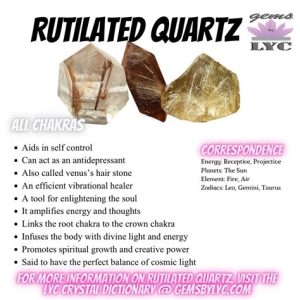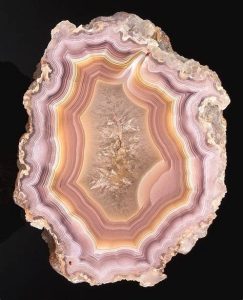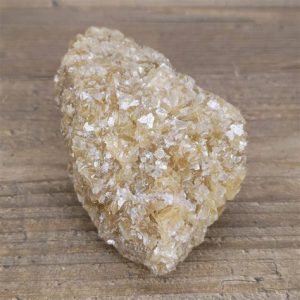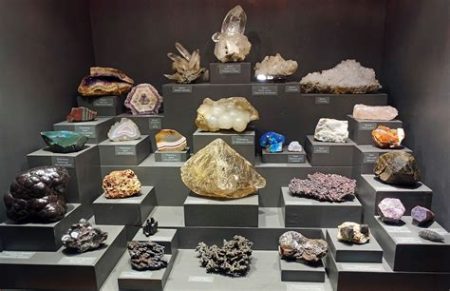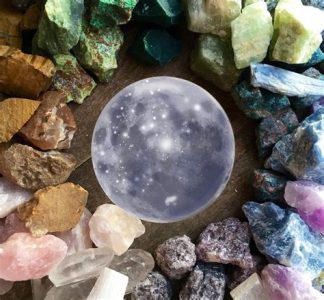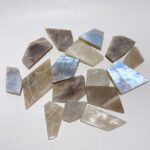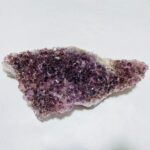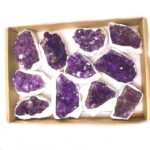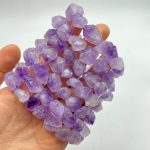Overview
Blue stones refer to a diverse group of gemstones and minerals characterized by their captivating blue hue. Found in various shades and intensities, these stones have been prized for their beauty, symbolism, and reputed metaphysical properties throughout history.

Types of Blue Stones
The term “blue stones” encompasses a wide range of gemstones and minerals, each with its unique characteristics:
1. Blue Sapphire
Renowned for its intense blue color and hardness, blue sapphire is a variety of corundum. The most valuable sapphires exhibit a deep, cornflower-blue hue known as “royal blue.”
2. Aquamarine
An alluring gemstone, aquamarine belongs to the beryl family. Its name, derived from Latin, translates to “water of the sea,” accurately capturing its pristine blue color.
3. Tanzanite
Discovered in Tanzania in the 1960s, tanzanite is a relatively rare gemstone known for its intense blue-to-violet coloration. Its scarcity has made it highly sought-after by collectors and jewelry enthusiasts.
4. Lapis Lazuli
An opaque, deep blue gemstone, lapis lazuli has been prized for its rich color and historical significance. It has been used in jewelry, art, and ornamentation for centuries.
5. Blue Topaz
A member of the topaz family, blue topaz is typically colorless in its natural state. However, heat treatment can enhance its blue hue, resulting in a range of shades from light blue to dark blue.
Symbolism and Metaphysical Properties
Blue stones have been associated with a variety of symbolic and metaphysical meanings throughout history:
- Tranquility and Serenity: The soothing blue hue of many blue stones is said to evoke feelings of peace, tranquility, and serenity.
- Communication and Expression: Blue stones are believed to enhance communication skills, foster understanding, and facilitate self-expression.
- Loyalty and Trust: The blue color is often linked to loyalty, trust, and fidelity. Wearing blue stones is thought to promote these qualities in relationships.
- Protection and Healing: Certain blue stones, such as lapis lazuli and turquoise, are believed to offer protection against negative energies and promote healing.
Applications in Jewelry
Blue stones are highly prized in jewelry, where they are used to create stunning pieces that suit various styles and preferences:
- Engagement Rings: Blue sapphires have become increasingly popular as engagement rings, offering a unique and alluring alternative to traditional diamonds.
- Pendant Necklaces: Blue stones make eye-catching pendants that add a touch of elegance and sophistication to any outfit.
- Statement Earrings: Bold blue stone earrings are perfect for making a statement and turning heads.
- Brooches and Cufflinks: Blue stones can also be incorporated into brooches and cufflinks, adding a touch of sophistication to formal attire.
Industrial Applications
Beyond their use in jewelry, blue stones also find applications in industry:
- Electronics: Certain blue stones, such as sapphire, are used in electronic components, including transistors and lasers.
- Medical Devices: Blue stones, particularly lapis lazuli, have been used in some medical devices due to their alleged healing properties.
- Pigments and Dyes: Blue stones have been historically used as pigments in paints and dyes to create a range of blue hues.
Historical Significance
Blue stones have played an important role throughout history:
- Ancient Egypt: The Egyptians revered lapis lazuli and believed it to possess sacred powers, using it in amulets, jewelry, and religious artifacts.
- Medieval Europe: Blue sapphires were highly valued in medieval Europe, symbolizing purity, wisdom, and protection.
- Renaissance Italy: Artists such as Michelangelo and Raphael used blue stones, including lapis lazuli, to create stunning artwork.
- Victorian Era: Blue stones, particularly turquoise, were fashionable during the Victorian era, adorning jewelry, clothing, and home décor.
Market Trends and Value
The global blue stone market is estimated to be worth over $1 billion and is expected to grow steadily in the coming years. The value of blue stones is influenced by several factors:
- Rarity and Availability: Rarer stones, such as tanzanite and blue sapphire, typically command higher prices.
- Color and Intensity: The deeper and more intense the blue color, the more valuable the stone.
- Clarity and Cut: Stones with high clarity and precise cuts increase their value.
- Provenance and Authenticity: Stones with a clear provenance and certified authenticity are more sought-after.
Table 1: Blue Stone Occurrence and Mining Locations
| Stone | Occurrence | Mining Locations |
|---|---|---|
| Blue Sapphire | Sri Lanka, Myanmar, Thailand | Madagascar, Australia, Nigeria |
| Aquamarine | Brazil, Nigeria, Pakistan | Zambia, Mozambique, Afghanistan |
| Tanzanite | Tanzania | Limited to Merelani Hills in Tanzania |
| Lapis Lazuli | Afghanistan, Chile, Russia | Badakhshan Province in Afghanistan |
| Blue Topaz | Brazil, Nigeria, Madagascar | Sri Lanka, Pakistan, Australia |
Table 2: Blue Stone Colors and Shades
| Stone | Color Range | Shades |
|---|---|---|
| Blue Sapphire | Deep blue to cornflower blue | Royal blue, midnight blue |
| Aquamarine | Light blue to deep blue-green | Sky blue, seafoam green |
| Tanzanite | Intense blue to violet-blue | Royal blue, sapphire blue |
| Lapis Lazuli | Deep blue to azure blue | Indigo blue, cobalt blue |
| Blue Topaz | Light blue to dark blue | Swiss blue, London blue |
Table 3: Blue Stone Symbolism and Metaphysical Properties
| Stone | Symbolism | Metaphysical Properties |
|---|---|---|
| Blue Sapphire | Wisdom, truth, loyalty | Protection, tranquility, balance |
| Aquamarine | Courage, communication, peace | Calming, soothing, promotes emotional well-being |
| Tanzanite | Spiritual growth, transformation, psychic abilities | Enhances intuition, facilitates change, promotes healing |
| Lapis Lazuli | Protection, wisdom, spiritual enlightenment | Protects against negative energies, stimulates creativity, encourages spiritual awareness |
| Blue Topaz | Hope, joy, communication | Promotes positive thinking, enhances self-expression, brings clarity |
Table 4: Blue Stone Applications and Industries
| Application | Industry | Specific Uses |
|---|---|---|
| Jewelry | Jewelry, fashion accessories | Rings, necklaces, earrings, bracelets |
| Electronics | Electronic components | Transistors, lasers |
| Medical Devices | Medical equipment | Healing instruments, energy therapy devices |
| Pigments and Dyes | Art, textiles | Paints, dyes, glazes |
Innovative Applications and Future Prospects
The potential for blue stones extends beyond their traditional uses, inspiring novel applications in various fields:
- Quantum Computing: Blue sapphires are being explored for use in quantum computing, where their unique properties could improve the performance of quantum circuits.
- Biomedical Research: The antimicrobial properties of certain blue stones, such as lapis lazuli, are being investigated for potential applications in biomedical research.
- Renewable Energy: Blue tanzanite has shown promise as a material for highly efficient photovoltaic cells, offering the potential to enhance solar energy production.
- Metamaterials: The unique optical properties of blue stones have led to their use in creating metamaterials with extraordinary properties, such as negative refractive index and electromagnetic cloaking.
FAQs
1. What is the most expensive blue stone?
Blue sapphire is generally considered the most expensive blue stone due to its rarity, hardness, and intense blue color.
2. What is the difference between blue sapphire and blue topaz?
Blue sapphire is naturally blue due to the presence of trace elements, while blue topaz is typically colorless and is heated to enhance its blue color. Blue sapphire is also harder and more durable than blue topaz.
3. Are blue stones safe to wear?
Most blue stones are safe to wear, but some may require special care. For example, lapis lazuli can contain traces of sulfur, which may discolor skin with prolonged wear.
4. Can blue stones be used in feng shui?
According to feng shui principles, blue stones are associated with the water element and are believed to promote tranquility and ser

